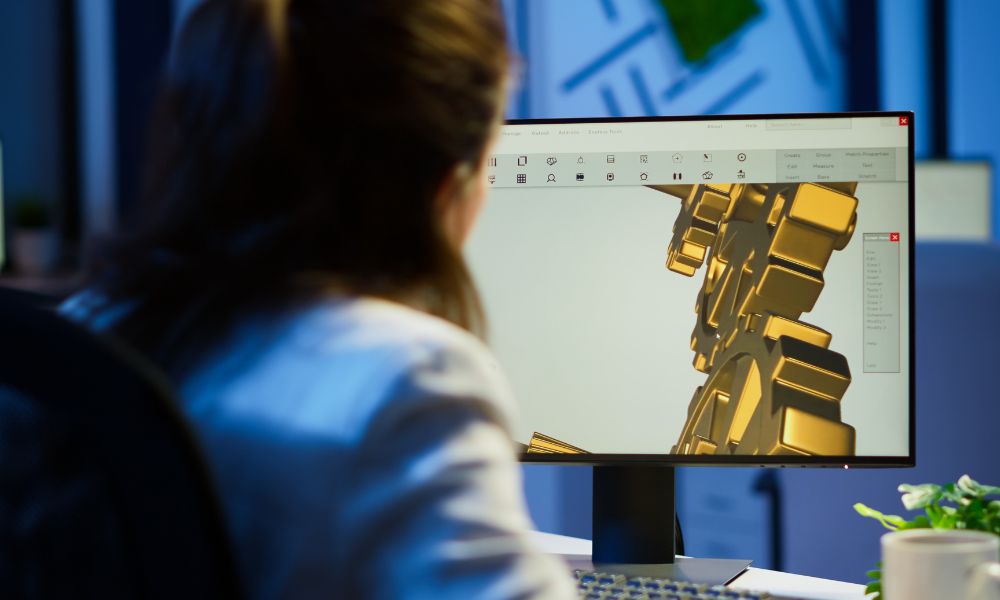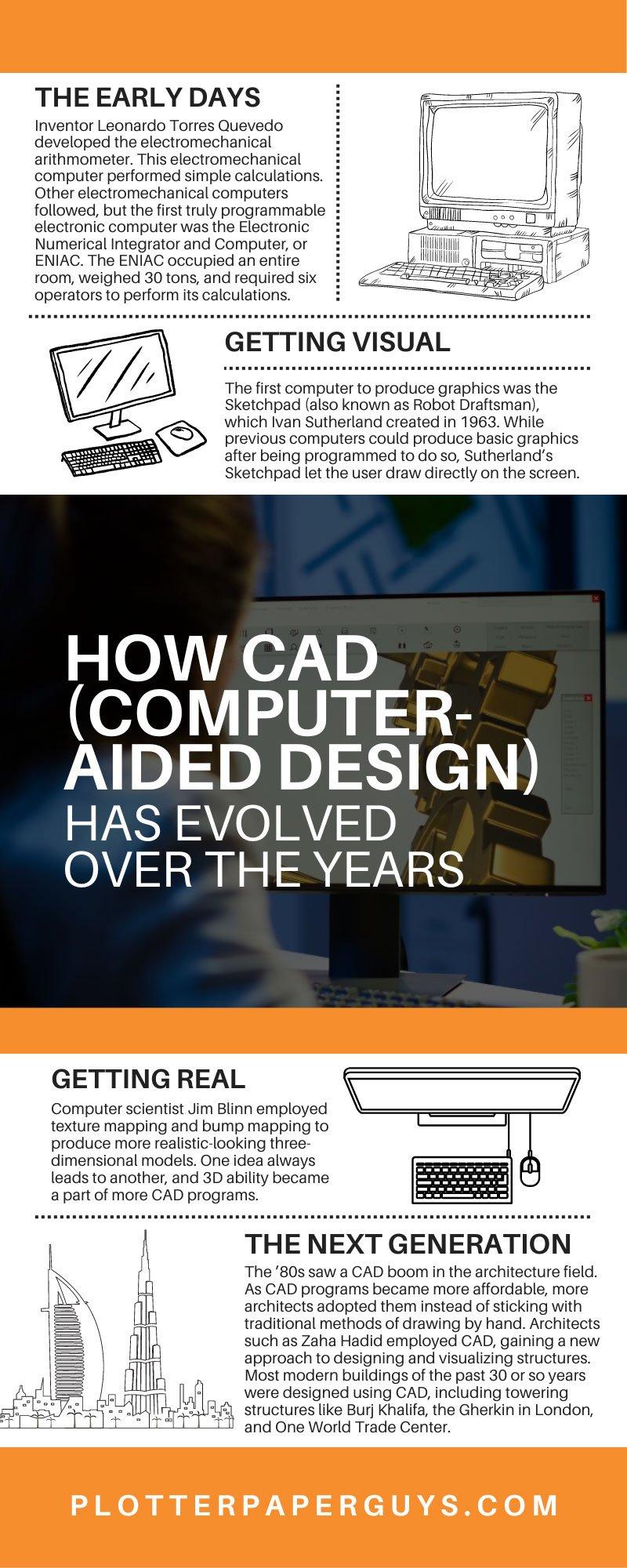Ever since the days of cave paintings, human beings have felt the need to capture the images they see around them and in their heads. But even though there will always be a place for pens, pencils, paints, and paper, the fact is that computers are here to stay as design devices. While there’s a definite tactility and permanence to hand-drawn and hand-designed things, computers have slowly proved themselves in many ways. Through computers, we can create models that act and react under certain conditions the same way their real-world counterparts would. That’s all great, but how did computer-assisted design come to be, and how has it changed? Here’s how CAD (computer-aided design) has evolved over the years.
The Early Days
Early computers didn’t come with monitors or similar visual interfaces. While humanity had long-since developed tools like abaci, slide rules, and similar early calculating devices, Charles Babbage conceived of the first mechanical computer.
Unfortunately, Babbage’s brilliance was far ahead of his time’s ability to create what he called his “difference engine.” The engine required thousands of small parts that people couldn’t craft using the tools of the day.
However, almost a century later, working on Babbage’s ideas, inventor Leonardo Torres Quevedo developed the electromechanical arithmometer. This electromechanical computer performed simple calculations. Other electromechanical computers followed, but the first truly programmable electronic computer was the Electronic Numerical Integrator and Computer, or ENIAC. The ENIAC occupied an entire room, weighed 30 tons, and required six operators to perform its calculations. We were still quite far from the days of CAD.
Getting Visual
The Whirlwind I was very likely the first computer with a video display. Built at the Massachusetts Institute of Technology in 1945 and further designed throughout much of the 1950s, the Whirlwind first featured a cathode ray tube display sometime in 1951. Especially notable is the Whirlwind I, which used a light pen for writing directly to the screen.
The first computer to produce graphics was the Sketchpad (also known as Robot Draftsman), which Ivan Sutherland created in 1963. While previous computers could produce basic graphics after being programmed to do so, Sutherland’s Sketchpad let the user draw directly on the screen.
A newer system based on a program named DAC—for Design Automated by Computer—emerged. Computer scientist Patrick J. Hanratty, who worked for General Electric at the time in the early 1960s, created and improved this system. It used interactive graphics, creating ADAM (Automated Drafting & Machinery), a program that is the ancestor of most of today’s drafting and graphic design systems.
By 1971, the first computer-aided design (CAD) programs and computers became readily available to the public and major industries that required highly technical and precise designs. The military was the largest employer of these earlier systems, but technological giants like IBM, General Motors, Lockheed, and similar companies became very interested in the new technology.
Getting Real
Despite advances and growing interest, manual drawing was still the norm for engineers, designers, and architects. CAD wasn’t intended to replace manual drawing but rather to enhance and perfect the process of creating blueprints, plans, technical drawings, models, and other projects. As it turns out, CAD was still years away from providing anything more than two-dimensional pen-and-paper drawings could provide. Still, the possibilities were there.
One of CAD’s biggest goals was the production of 2D images that could emulate the final three-dimensional model of a design. Throughout the 1970s, people worked to engineer modeling programs that could create three-dimensional models on-screen. Early programs, of course, could only accommodate the creation of basic shapes, but big changes were coming.
Early on, computer scientist and later co-founder of Pixar Edwin Catmull saw the possibilities of 3D modeling software. In 1972, he created a short computer animation of his left hand and wrist using 3D modeling software. He was hired to produce the first use of computer-generated imagery in the film Westworld (1973). He also created and developed texture-mapping algorithms, which add textures and other details to CAD images.
Later, computer scientist Jim Blinn employed texture mapping and bump mapping to produce more realistic-looking three-dimensional models. One idea always leads to another, and 3D ability became a part of more CAD programs.
The Next Generation
The ’80s saw a CAD boom in the architecture field. As CAD programs became more affordable, more architects adopted them instead of sticking with traditional methods of drawing by hand. Architects such as Zaha Hadid employed CAD, gaining a new approach to designing and visualizing structures. Most modern buildings of the past 30 or so years were designed using CAD, including towering structures like Burj Khalifa, the Gherkin in London, and One World Trade Center.
Things got even more real with the development of 3D printing. CAD had foretold the coming of three-dimensional printing for decades, but it wasn’t until 1981 that Dr. Hideo Kodama created the first 3D printer. Dr. Kodama’s device could take a CAD design and output a three-dimensional model from a quickly polymerized resin. Modern 3D printing took a few more years to develop when Chuck Hull developed the SLA, the first commercially available 3D resin printer.
What’s Next
That’s a brief rundown of how computer-aided design has evolved over the years. But plenty of CAD and printing history has yet to make the history books! Now that you know the technology’s past, you can look forward to—and possibly add to—its future. If you need help finding the proper printer or premium bond paper that best shows off your own architectural, engineering, or technical designs, call us for a consultation. We offer a huge selection of printing products and accessories and have years of technical know-how to help you decide what large-format printers, papers, films, ink, and other materials are best for your business. Contact us today with any questions, and let us put our 40 years of printing experience to work for you. Whether you’re a local merchant or an international corporation, we can help. Visit our website for more information and to review our large selection of products, services, and professional knowledge.





